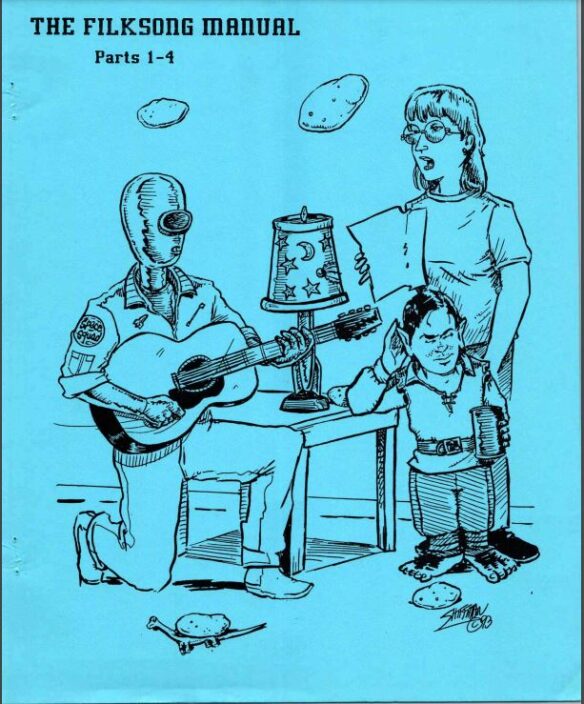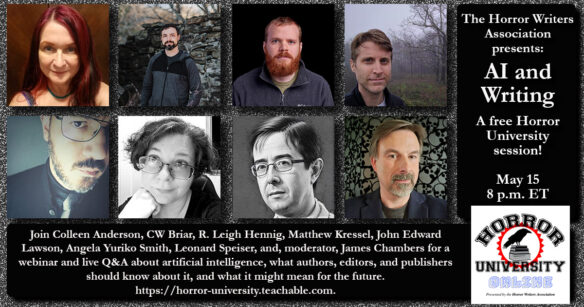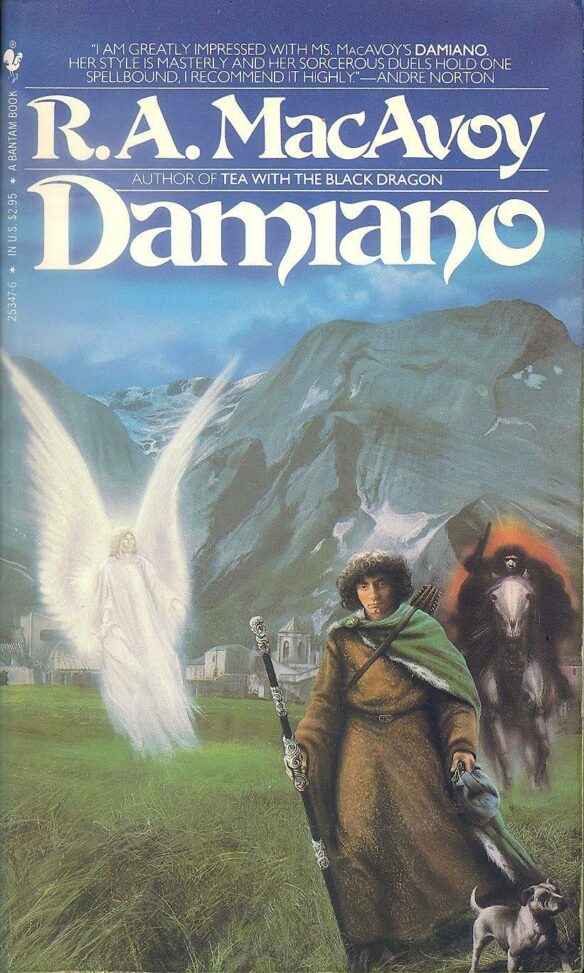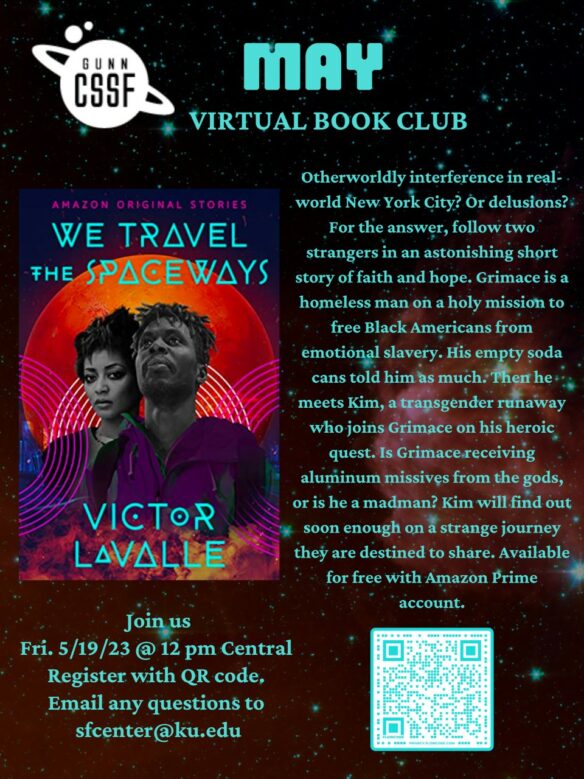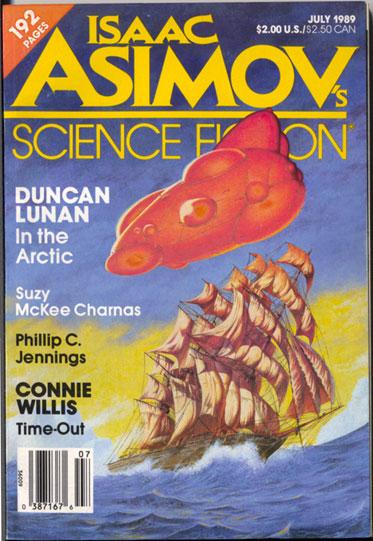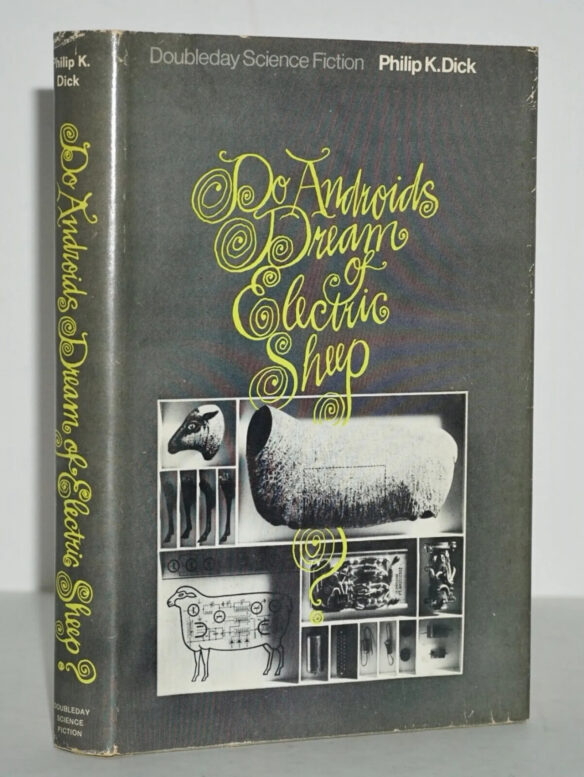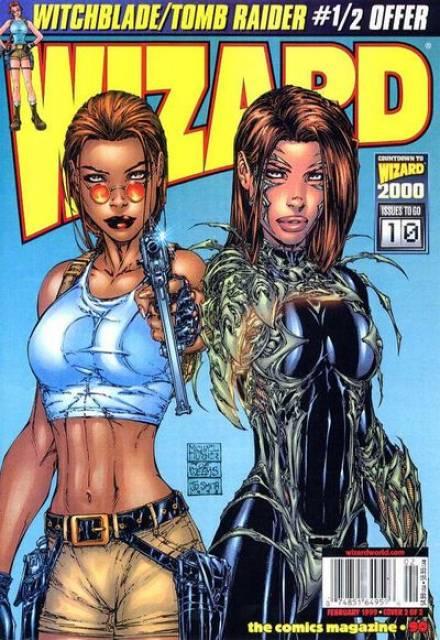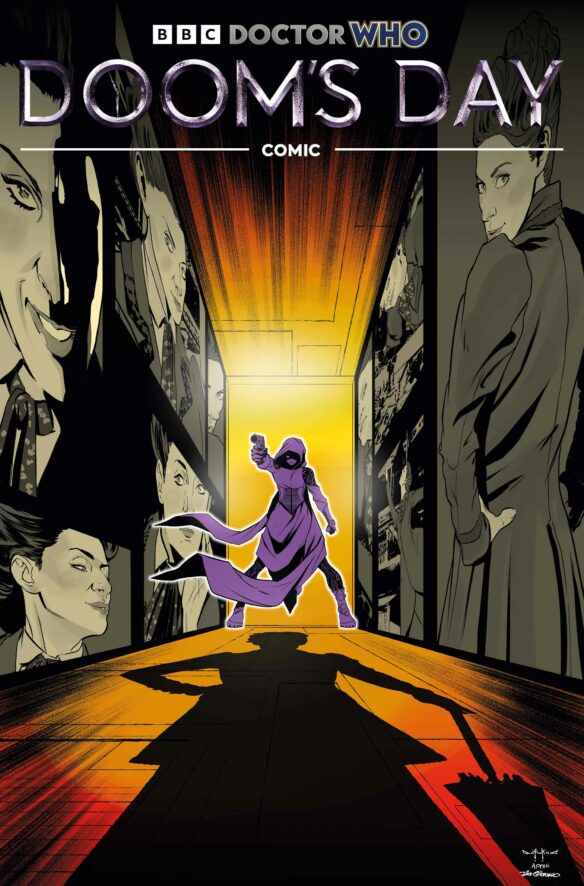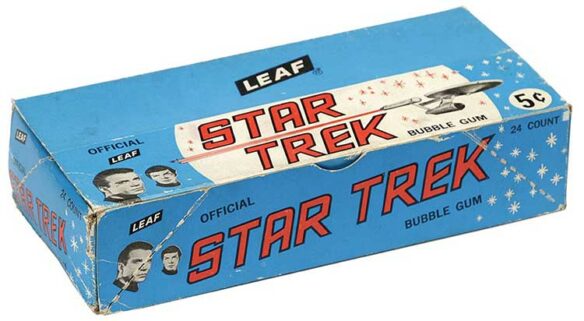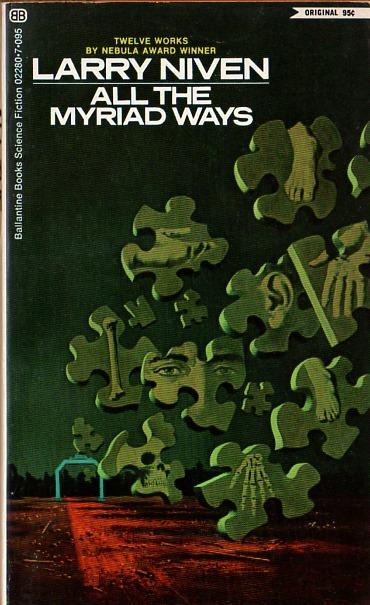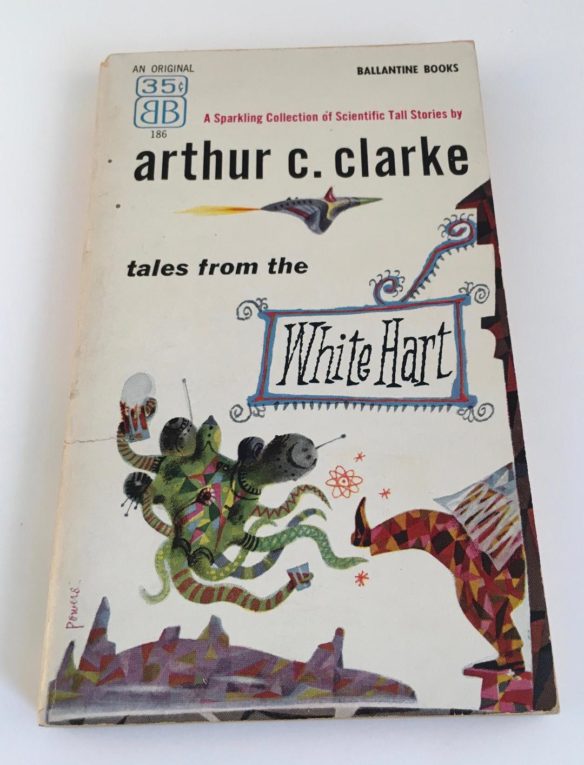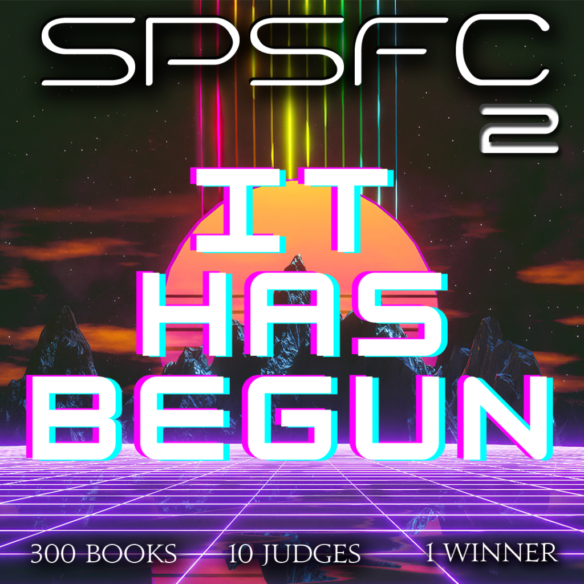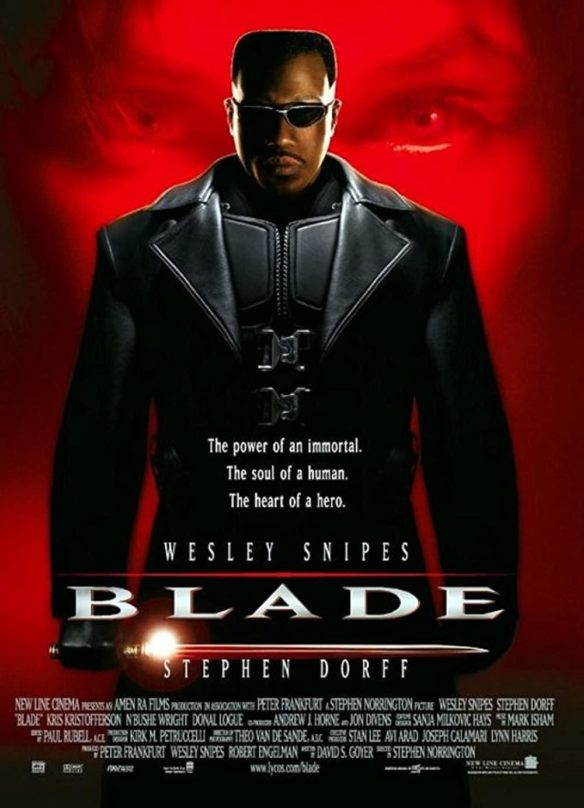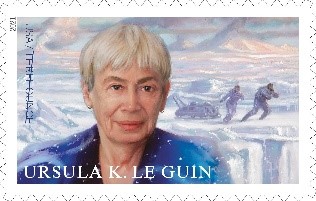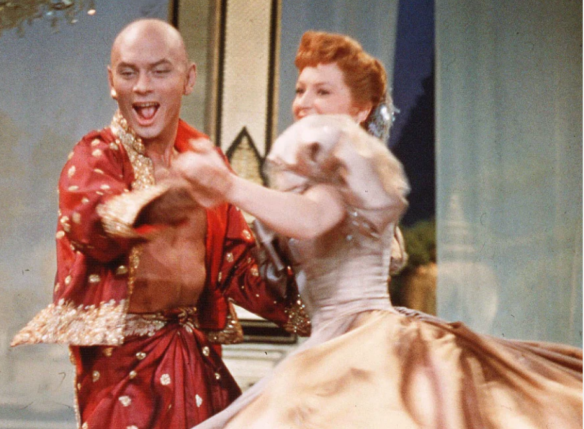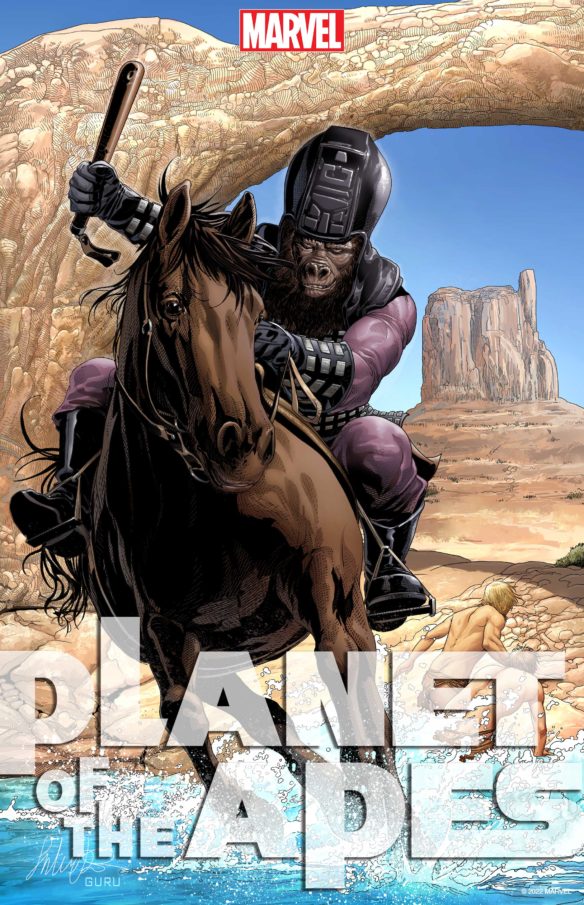(1) TREK CREWS SUPPORTING STRIKE. “Star Trek Actors Join Writers On Trek-Themed Picket Lines In LA And NYC” – TrekMovie.com has the story.
…The WGA West and the WGA East both called for Star Trek writers to picket on Friday at the Paramount in Hollywood and at the Manhattan headquarters of Netflix. Star Trek writers showed up at both locations, joined by actors and others who have worked on the franchise.
Strange New Worlds writer/co-executive producer (and WGA strike captain) Bill Wolkoff shared a group photo from Hollywood. Writers and actors from Star Trek: The Original Series, The Next Generation, Deep Space Nine, Voyager, Enterprise, Discovery, Picard, Strange New Worlds, Lower Decks, and Prodigy can all be seen showing their support….
…In New York, Lower Decks voice actress (and Starfleet Academy writer) Tawny Newsome shared photos that included actors Anthony Rapp (Discovery) and Celia Rose Gooding & Jess Bush (Strange New Worlds)….
… TNG actress Denise Crosby met up with Picard showrunner Terry Matalas.
(2) WHEATON KERFUFFLE. Meanwhile, Wil Wheaton launched his own front by criticizing a Jeopardy! host. Comic Sands has the story: “Wil Wheaton Slams Ken Jennings For Crossing WGA Picket Line”.
Wheaton wrote on Facebook:
“This is a VERY small town, Ken Jennings, and we will all remember this. Your privilege may protect you right now, but we will *never* forget.”
The post has since blown up on social media, so Wheaton added some more information in an edit:
“This is getting more attention than I expected or wanted, and I don’t want this to be about me being disappointed by a choice Ken Jennings made.”
“I want attention and energy focused on supporting the writers who are fighting for their professional existence, opposed by billionaires who are keen to ruin my entire industry.”
This afternoon Wheaton told Facebook followers that The National Enquirer was trying to milk the story even more.
Hey, isn’t this neat? The National Enquirer asked me to comment on a story they are running, claiming I “publicly threatened” Ken Jennings.
Here’s what they sent:
To Whom It May Concern:
The National Enquirer is preparing to publish a story reporting Wil Wheaton has publicly threatened Jeopardy host Ken Jennings for crossing the writer’s picket line.
The story quotes Mr. Wheaton’s Facebook message which stated, “This is a VERY small town, Ken Jennings, and we will all remember this.”
It also points out that Mr. Wheaton is close friends with Mr. Jennings’ competition for permanent hosting duties on Jeopardy — Mayim Bialik.
Here is my entire response, in the *cough* unlikely event *cough* they edit it for space or somesuch:
Your clumsy efforts to misrepresent me, to mislead your readers, to distract from the issues underlying the strike, have not gone unnoticed. But since you asked, let me be clear: I didn’t threaten anybody. That’s laughable. I’ve been threatened. It sounds like, “be careful on your way home tonight.” It doesn’t sound like “I will remember that you betrayed us when it was convenient, and other people will, too.”
I support organized labor without exception and will never cross a picket line. I stood (and stand) with and for my fellow union members. Hollywood is a notoriously dishonest industry that runs on relationships and trust. We tell stories and make stuff up for a living! We need to know who we can trust and who we can’t; who stands with us, and who will sell us out. It’s not a threat; it’s a fact.
You would do well to inform your readers that regulatory capture, the monopolization of entertainment companies, and the incomprehensible greed of a handful of billionaires threaten my entire industry and countless people I love. WGA (and possibly my union, SAG-AFTRA) members are fighting for our careers, our families, our healthcare and the future of our industry. The billionaires across the table are fighting for bigger yachts.
I’m deeply disappointed with Ken. I think he’s a great host, an obviously sensational player, and the couple times I’ve met him, I’ve enjoyed our conversations. The fact is, he has an enormously high profile, and his choices affect the writers of his show and the entire WGA in a meaningful way that people pay attention to. He is certainly more influential, and can have a more direct impact, than me. I hoped he would use that privilege to put the needs of the many ahead of the greed of the few. He didn’t, and speaking only for myself, I will remember that. That isn’t a threat; it’s keeping a promise to my fellow workers, and honoring the sacrifices of all who came and fought before us.
Wheaton added a little snark in the comments.
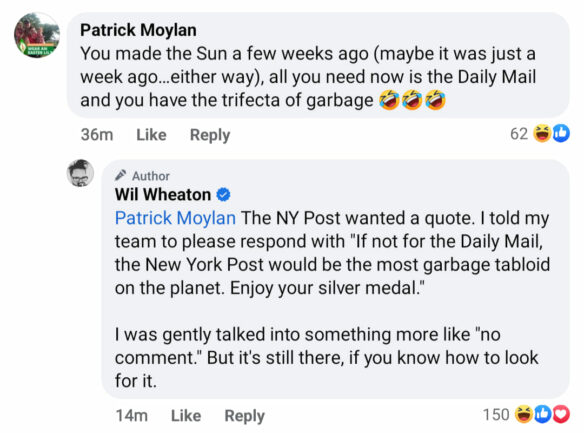
(3) THE NUMBER OF YOUR DOOM. In “The Annals of Not So Terrible Fates”, Camestros Felapton has devised a foolproof table that you can use to foretell your terrible ending.
A doom awaits you! To learn your fortune you must meddle with the dark forces of pseudonumerology…
Here is my result:
15. Overtaken by Artificial Intelligence
A self-driving care overtakes you on the road in a way that you find disrespectful.
I suppose it’s completely in character that my fate contains a typo.
(4) THEY’RE HERE! [Item by Steven French.] Excellent list by Nina Allan, author of Conquest: “Top 10 strangest alien invasion novels” in the Guardian. At number nine:
9. Lagoon by Nnedi Okorafor
With its jump cuts and tessellations, Okorafor’s playful, almost filmic account of an alien expedition to the city of Lagos feels unlike any alien invasion story you might have read before. Science fiction cohabits with fantasy to produce a vigorous, gorgeous mutation teeming with deft postmodernist touches: chapters told from non-human points of view, snapshots of reportage, moments when Okorafor breaks the fourth wall to ask how readers might have reacted had they been there. A joyously experimental text, Lagoon shimmers with the delirium and chaos that might be expected from an alien visit.
(5) GRAPES OF WRATH. Jason Sanford devoted a Genre Grapevine to “the Sudowrite Controversy and the Increasing Pushback Against AI”, a free post on Patreon. It includes a brief interview with Amit Gupta, Co-Founder of Sudowrite.
…On May 17, Gupta’s fellow Sudowrite co-founder James Yu announced the launch of Story Engine. As Yu wrote on Twitter, “Our awesome team worked with hundreds of novelists for months to build the ideal interface for writers and machines to collaborate on a narrative. … Story Engine is the first serious tool for long-form AI writing.”
In the video attached to the announcement, Yu said Story Engine would allow authors to “write an entire novel in just a few days.”
As Yu noted, previous AI writing models had difficulty staying on track with a story “for more than a few paragraphs,” meaning most “AI products were optimized for short generations.” Story Engine evidently fixes this by allowing people to provide the system with character information, overall plot points, themes, and more data tailored for longer-form stories. This helps the AI remain focused on generating a story that would, in Yu’s words, stay true to the “author’s vision.”
And the reaction from the writing community to this development? Perhaps this headline in Gizmodo best sums that up: “Sudowrite Launches Novel-Writing AI Software for Pseudo-Writers.“
To say that Yu’s announcement was ratioed hard is an understatement, with his tweet receiving by May 21 over 8.2 million views but only 182 regular retweets and 963 likes. Instead, there were over 4,500 quote retweets where people generally ripped into the announcement….
(6) TODAY’S 10,000. Horror movies were banned in Australia for two decades? News to me! Daniel Best tells that history in “Charles Higham and the Fate of the 1965 Bulletin Ban List”.
Horror movies were formally banned in Australia in mid-1948. This ban wasn’t announced with any great fanfare, rather it was a subdued series of articles in newspapers and tabloid magazines that stated the premise of the ban – all horror films from 1949 onwards would be subject to an instant ban, with no exceptions. Films already in the country, which had been passed by the censor and dated pre-1948, would be exempt from the ban. Thus the status quo was established, and it remained this way for over twenty years.
(7) MARTIN AMIS (1949-2023). Martin Amis died May 19 at the age of 73. His genre-related contributions include Time’s Arrow (1991), which was shortlisted for the Booker Prize. As described in the Wikipedia —
Notable for its backwards narrative – including dialogue in reverse – the novel is the autobiography of a Nazi concentration camp doctor. The reversal of the arrow of time in the novel, a technique borrowed from Kurt Vonnegut‘s Slaughterhouse 5 (1969) and Philip K. Dick‘s Counter-Clock World (1967), is a narrative style that itself functions in Amis’s hands as commentary on the Nazis’ rationalisation of death and destruction as forces of creation with the resurrection of Nordic mythology in the service of German nation-building
According to ISFDB he wrote a fair amount of short sff, featured in two collections, Einstein’s Monsters and Heavy Water and Other Stories.
He was the son of author Kingsley Amis.
(8) MEMORY LANE.
2013 – [Compiled by Cat Eldridge.]
Rebecca Campbell was not an author I was aware of before Mike picked her this afternoon for the Beginning. It turned that she is a quite fascinating person who, as she says on her most excellent site, writes “weird stories about climate change and ghosts, mostly, though aliens and parasites sometimes show up, too, and I will always love archives and libraries”.
NeWest Press published her The Paradise Engine a decade ago. It’s her only novel to date according to ISFDB, though she has written some novellas and a generous amount of short fiction. Our Beginning is from The Paradise Engine.
And for her Beginning…
A Ghost Story
The first ghost appeared at the end of August, when Jasmine had already been gone for months. That was too bad because she was the only person Anthea knew who would recognize a ghost when she saw one, or know what to do about it.
Anthea didn’t know a ghost when she saw one, though she was the one haunted. She also didn’t know what had happened to Jasmine, but whatever it was, it was probably over. She knew only this: Jasmine was last seen just northwest of the city, on a highway that curled uphill along the coast and the mountains. She was last seen early in June, in the company of a bearded Caucasian male apprx. 30 yrs of age, who carried an army surplus backpack and was otherwise without distinguishing characteristics. Anthea could determine, then, that Jasmine was last seen facing southeast, hitching northwest along a highway that grew pineapple weed on its shoulders. Pineapple weed smelled like chamomile tea when it bruised, as it would do under Jas’s runners when she stood for long stretches, one thin arm reaching out into the traffic and the other propped on her hip. Given how hot June had been, Anthea also knew Jasmine was kneecapped by heat waves that rose from the highway, so she seemed to float above the asphalt. To the drivers who did not pick them up, they might have been a mirage, or ghosts from the early ’70s.
Jasmine would have enjoyed being mistaken for a ghost, especially one that smelled of chamomile. She and the man walked northwest all day. Sometimes where the shoulder was narrow, she slithered halfway down the ditch and he’d turn around to help her to her feet. They were still walking when the sky turned purple and rusty orange over the mountains. Jas’s arms crossed over her chest. She shivered with dehydration and the sun-ache in her temples, the tight wrinkle of a burn on her nose and forehead. After that night no one saw anything, and so Anthea is unable to determine how much longer they walked north and west. This little film plays out in her head sometimes, unresolved.
That was months before the haunting, though, which had its start very early on a Sunday morning at the end of August. Anthea was asleep when it began, and she mistook the first visitation for a dream. In the dream a dark-haired man told her something very important she should not forget in a voice that had the texture of a shellac 78 on an old turntable. She listened politely to the man for a long time, unable to grasp his words though she felt their urgency. Just as she began to understand what the man wanted her to know, the squirrels in the attic started fighting, as they often did in the early morning. Half-awake and still listening to the distorted voice in her dream, she sat up and hit the angled wall above her head, and then stood and thumped the ceiling with the heel of her hand.
By the time Anthea was fully awake—still hitting the plaster, the squirrels still fighting overhead—the phone was ringing and she forgot even that she should not forget the antiqued voice of her dream, and so the second supernatural event of Anthea’s life passed her without remark. She picked up the phone beside the bed, but no one was there.
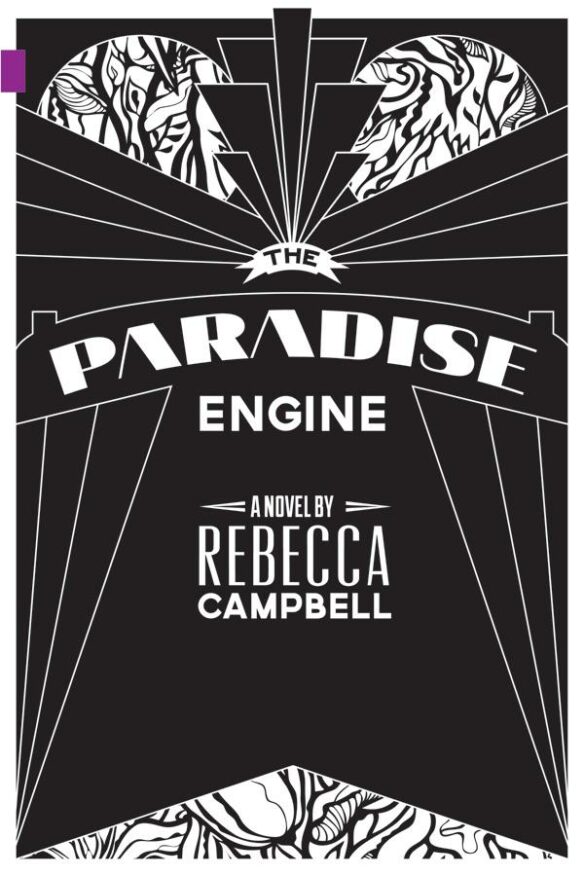
(9) TODAY’S BIRTHDAYS.
[Compiled by Cat Eldridge.]
- Born May 22, 1859 — Arthur Conan Doyle. I read the Holmes stories a long time ago. My favorite is The Hound of the Baskervilles as it allows him to develop a story at length. Favorite video Holmes? Jeremy Brett. Looking at ISFDB, I’m see there were more Professor Challenger novels than I realized. And the Brigadier Gerard stories sound suspiciously comical… (Died 1930.)
- Born May 22, 1900 — Wallace West. His first two short stories were “Loup-Garou” in Weird Tales, October 1927 and “The Last Man” in Amazing, February 1929. He published continuously through the Sixties though only averaged a story a year. Interestingly his first two novels were about Betty Boop in the Big Little Books format: Betty Boop in Snow-White: Assisted by Bimbo and Ko-Ko and Betty Boop in “Miss Gulliver’s Travels”. He wrote four genre novels, only a few of which are available from the usual suspects. (Died 1980.)
- Born May 22, 1901 — Ed Earl Repp. His stories appeared in several of the early pulp magazines including Air Wonder Stories, Amazing Stories and Science Wonder Stories. Some were collected in The Radium Pool (just three stories), The Stellar Missiles (another three stories) and Science-Fantasy Quintette (five this time with two by L. Ron Hubbard). He also had one SF novel written in 1941, Rescue from Venus. He turned to writing scripts for Westerns and never wrote any fiction thereafter. (Died 1979.)
- Born May 22, 1907 — Hergé. He is best remembered for creating The Adventures of Tintin which are considered one of the most popular European comics of the 19th and 20th centuries. He is much less remembered for Quick & Flupke, a short-lived series between the Wars, and The Adventures of Jo, Zette and Jocko which lasted well into the Fifties. (Died 1983.)
- Born May 22, 1914 — Sun Ra. As SFE says he “played and released a large quantity of music, mostly in the postwar period, all of it inflected by his fascination with outer space, Alien encounter, Ancient Egypt (whose Sun god inspired his working name) and Atlantis.” It’s well worth reading the fascinating SFE entry on him. (Died 1993.)
- Born May 22, 1964 — Kat Richardson, 59. Her Greywalker series is one of those affairs that I’m pleased to say that I’ve read every novel that was been published. I’ve not read Blood Orbit, the first in her new series, yet. Has anyone here done so? Her Blood Orbit novel won an Endeavour Award which is given for a science fiction or fantasy book written by a Pacific Northwest author and is given by a panel of judges chartered by Oregon Science Fiction Conventions, Inc.
- Born May 22, 1968 — Karen Lord, 55. She’s a Barbadian writer. Her debut novel, Redemption in Indigo, retells the story “Ansige Karamba the Glutton” from Senegalese folklore; The Best of All Possible Worlds and The Galaxy Game are genre novels as is her edited New Worlds, Old Ways: Speculative Tales from the Caribbean.
(10) COMICS SECTION.
- Free Range shows the moment of surprise in an alien robbery.
- Macanudo has an equation that yields horror.
- Thatababy finds out what happens to a superhero who signs too many checks.
(11) SOMETHING FOR WAR GAMERS AND AUTHORS OF MILITARY SF. [Item by Francis Hamit.] We have the smartest military in the world. Seriously. You can’t attain flag rank now without a PhD or three Masters degrees. This article is a very thoughtful analysis of urban combat and why it matters. “Decided among the Cities: The Past, Present, and Future of War in Urban Environments” at Army University Press.
Cities not only possess cultural and psychological value for combatants, but they are also sociologically and geographically anchored to multiple aspects of military key terrain. Cities sit astride, near, or encompass major ground routes (road and rail), major water crossings such as large bridges, and logistical and power projection hubs for sea and air. The ongoing conflict in Ukraine provides an immediate example of the importance of cities themselves and what cities contain. Moreover, the importance of cities is apparent with a study of history. However, even with history and current events, there is faint acknowledgement of the importance of the urban fight in military theory, and it has limited coverage in U.S. Army doctrine. When acknowledged, urban operations are largely discussed in commentary on their inherent difficulty, the natural aversion to costly fighting characteristic of urban combat, and with the recommendation to bypass or avoid city fights altogether. However, as history and recent examples in Ukraine demonstrate, conflicts often are decided among the cities. The physical and infrastructure characteristics of cities naturally and geographically can make control of them critical for victorious military campaigns. The one who can seize and hold the city controls, or just denies, crucial capabilities to military operations…
(12) 3 MOVIE ALERTS: THESE STREAMS YOU MIGHT WANT TO CROSS. [Item by Daniel Dern.] Within the past month or so I’ve finally been able to see a few films that had been on my “watch at home when they’re available at no additional cost” (as in, on streaming services I subscribe to, or as DVD/BluRay loans through the local library): Dungeons & Dragons: Honor Among Thieves, Ant-Man & The Wasp: Quantumania, and Peter Pan & Wendy.
The first two I’m going to say close to zero about other than “now available this way” (nor should I need to say more):
Dungeons & Dragons: Honor Among Thieves (Paramount Plus).
Lots of fun! It’s got dungeons! It’s got dragons! (But no dice or dice-rolling)
It’s nice to see a fantasy flick that doesn’t require backstory, doesn’t involve an orphaned/prophesied/etc. protagonist, is done-in-one (in terms of wrapping up the plot), and is focusing on a less-than-the-fate-of-everything plot.
One perhaps helpful note: If, like me, you’re on P+’s cheaper with-commercials tier, you’ll be happy to know they sensibly frontloaded a handful of commercials up front, and did not interrupt the movie (and included a note that they were doing it, just before the actual commercials).
Ant-Man and the Wasp: Quantumania (Display+)
While clearly part of the Marvel movie universe too-many-moving parts flow chart/timeline, this movie doesn’t require you to know much. Having seen the two previous Ant-Man movies can’t hurt; beyond that, knowing about the Thanos “snap” (from the past two Avengers flicks) resulted in many characters (including Scot Lang/Ant-Man) missing five years of normal timeline.
Another nice aspect in Q-mania is that, by taking place mainly in the Quantum Realm, that solves the super-hero universe conundrum, e.g., “so where are all the other (Marvel) heroes when all heck is breaking loose?” Answer, in this case: not in Quantumville.
Recommended.
Peter Pan & Wendy (Disney+)
I’m not a fan of the original book — as I discovered some years back while volunteer-literacy-tutoring. The first 20-30 pages are treacly enough to rot out even the toughest teeth — for no clear-to-me reason I watch many of the films — perhaps Robin Williams and the rest of the superb cast of Hook (I’ve still got the DVD, and, I think, also the laserdisk) deserve credit for that (and have read many of the post-Barrie books).
PP&W is based on the original book/movie/story-that-we-know, with a fair amount of edits, deletions and additions, all of which I heartily applaud. Princess T Lily (played by Alyssa Wapanatâh, who is, per IMDB, a member of the Bigstone Cree First Nation). The Lost Boys, while retaining their group’s name, include girls. And there’s more backstory connecting Peter and Hook. (Not all watchers/reviewers felt positive about this, e.g., this ComicsBookReview one.)
To be fair, I don’t recall thinking much of the 2015 Pan; (starring Hugh Jackman as Blackbeard, FYI) was the one where the big rocky scene had pirates and singing “Smells Like Teen Spirit” (here’s the video excerpt, in case you doubted my memory).
Same memory says I liked the 2003 Peter Pan…probably one reason it didn’t do well at the box office was that some other pirate movie debuted around the same time, starring that guy who played Edward Scissorhands, which grabbed more attention.
Now, back to waiting for the The Flash movie.
(13) MASSED MINDS PRODUCTION. Can someone be an AI writing addict? “Sci-fi author ‘writes’ 97 AI-generated books in nine months” reports The Register.
Sci-fi author Tim Boucher has produced over 90 books in nine months, using ChatGPT and the Claude AI assistant.
Boucher, an AI artist and writer, claims to have made nearly $2,000 selling 574 copies of the 97 works.
Each book in his “AI Lore” series is between 2,000 to 5,000 words long – closer to an essay than a novel. They are interspersed with around 40 to 140 pictures, and take roughly six to eight hours to complete, he told Newsweek.
Boucher’s superhuman output is down to the use of AI software. He uses Midjourney to create the images, and OpenAI’s ChatGPT and Anthropic’s Claude to generate text to brainstorm ideas and write stories….
(14) VIDEO OF THE DAY. [Item by SF Concatenation’s Jonathan Cowie.] It was Sci-Fi Sunday over at Isaac Arthur’s Futures and this month’s topic Co-existence with Aliens. He opines, “One day we may encounter intelligent aliens, but can we ever hope to understand their psychology and coexist with them if we do?”
[Thanks to Cat Eldridge, Mike Kennedy, Andrew Porter, Christian Brunschen, Kathy Sullivan, Daniel Dern, Juli Marr, Francis Hamit, Steven French, SF Concatenation’s Jonathan Cowie, John King Tarpinian, Chris Barkley, and Michael Toman for some of these stories. Title credit belongs to File 770 contributing editor of the day Cat Eldridge.]

